Korfes create wedding venue










 BY SARAH COLBURN STAFF WRITER
BY SARAH COLBURN STAFF WRITER



EAGLE BEND - Jeremiah and Kalie Korfe met at a Miss America pageant where she was a contestant and he was the country music entertainment.

Five years later, when they planned to marry, they decided to turn the land and barn Jeremiah had purchased, into a wedding venue while he would still actively farm the land around the site.






Instead of choosing napkin colors and table centerpieces, the couple picked out light fixtures and placement of electrical outlets and water lines.
Their wedding was held at Stone Hill Farm in the transformed barn in 2019. The business has been successful since, hosting 40 weddings in 24 weekends one year. They are almost completely booked for 2023.


From the beginning, the couple embraced one another’s strong work ethic and their commonalities. They both grew up in small towns, him in Clarissa and her in southern Idaho. They knew of one another on social media, and they were both interested in music.
“We formed a connection over the passion for the same things,” Ka-











lie said. “We did long distance dating for a while, for a year, while we were building the venue, and we had a long engagement period.”
Jeremiah was raised on a dairy farm, but he moved to Los Angeles with $300 in his pocket and began a 10-year touring stint as a BMI recording artist. He moved to Nashville and competed on CMT’s “Sweet Home Alabama,” a show similar to “The Bachelor,” in which he was chosen as a partner at the end. The relationship lasted three months but allowed him to launch his music career.

Kalie competed in the Miss America organization while working on her degree in business and marketing. She was raised by parents who were collegiate athletes and said she knew the determination involved in performing at that level. She went to

Stone Hill Farm page 2

Aountry cres
Published by Star Publications








Copyright 2014 522 Sinclair Lewis Ave. Sauk Centre, MN 56378


Phone: 320-352-6577
Fax: 320-352-5647
NEWS STAFF
Grace Jeurissen, Editor grace.j@star-pub.com
Jan Lefebvre, Writer jan.l@star-pub.com
Herman Lensing, Writer herman@melrosebeacon.com
Tiffany Klaphake, Writer tiffany.k@star-pub.com
Carol Moorman, Writer carol@melrosebeacon.com
Natasha Barber, Writer natasha@saukherald.com
Ben Sonnek, Writer ben.s@saukherald.com
Sarah Colburn Staff Writer
Story ideas send to: grace.j@star-pub.com


SALES STAFF

Robin Burnette, 320-351-7837 robin@saukherald.com

Missy Traeger, 320-291-9899 missy@saukherald.com


Tim Vos, 320-845-2700 tim@albanyenterprise.com

Mike Schafer, 320-894-7825 mike.s@dairystar.com

Warren Stone, 320-249-9182 warren@star-pub.com
Jaime Ostendorf, 320-309-1988
Jaime@star-pub.com

Bob Leukam, 320-260-1248 bob.l@star-pub.com

PRODUCTION STAFF
Pat Turner
Amanda Thooft
Nancy Powell
Maddy Peterson
Cheyenne Carlson
Karen Knoblach
Annika Gunderson
Deadlines:
Country Acres will be published the first Fridays of April, May, June, September, October and November, and the third Friday of every month. Deadline for news and advertising is the Thursday before publication.


ISSN: Print 2834-6440
Online 2834-6459
STR
Publications bli ti
“Committed to being the eyes and ears of our communities.”
Stone Hill Farm from front
school on a volleyball scholarship and was a state champion in track. She later melded her athleticism and her passion for music and the arts as she delved into pageantry, earning scholarships and bolstering charities. She sang and played guitar for talent portions of pageants.
Her pageant work led her down a path that continued to support and advocate for charities. She went on to work as the executive assistant to the First Lady of Idaho, and she has organized charity galas, events and fundraising campaigns for national organizations. She won the title of Miss Minnesota USA and went to compete at Miss USA on FOX.
Jeremiah and Kalie were both raised in strong faith households, each leading worship in the church. He sang and played guitar and drums. She sang and played guitar and piano.
“That connected us as well; our faith was very important to us and we completely saw eye to eye on that from the beginning,” Kalie said.
Though Jeremiah had initially envisioned the barn on the farm becoming a music venue, the couple decided it would be the perfect place to create
a wedding business instead. While searching for a place for their own nuptials, their plan to create a destination wedding site came into focus.
As they began their fouryear engagement, they simultaneously began their work on the barn.

“We really wanted to treat people to this fun experience and celebrate not only our marriage, but what we started together,” Kalie said. “There was a lot to be celebrated, and there were a lot of symbolic things happening at the same time.”

Prior to hosting their own wedding on site, the couple had a cousin who wanted to get married with the barn as the backdrop. They knew from the start that the shape and architecture of the site garnered interest. They held the cousin’s wedding and then began the renovations for their own wedding.

“We were looking into a place for ourselves, so we hit the ground running,” Kalie said. “We were wanting to build a business that was going to be sustainable long after our wedding, and we wanted to plan long-term.”
A lot of couples booked the wedding venue knowing the Korfe’s wedding was going to be first.
“People
put a lot of faith and trust in us,” Kalie said.
The Korfes renovated the inside of the barn and added a bridal suite and bathrooms. They made sure the space was structurally sound, removing trees growing through the side walls and adding structural beams and footings for support. They poured cement on the lower level, covering 3,000 square feet, and added a deck off the main barn space. The milking stalls were transformed into a cocktail space, and the upper-level hay mow became the reception space.
As they worked, they preserved the wood interior, the
walnut and oak in the upper level.
“It’s pretty incredible to showcase the beautiful wood that was all locally sourced,” Kalie said.
They brought in a bit of romance with chandeliers and accent lighting to highlight the rustic aesthetic.
Outdoors, they replaced the roof, fixed the pitch and slope of the surrounding lawn, grew new grass and added a fire pit area made from repurposed metal.
An outdoor pond is currently under construction and being built in coordination with the Todd County Soil and Water Conservation District in an effort to turn the old lagoon from the farm site into a functional pond atop the hill that will serve as a backdrop for wedding photos.
Stone Hill Farm page 3
Courier XT Zero Turn Mower


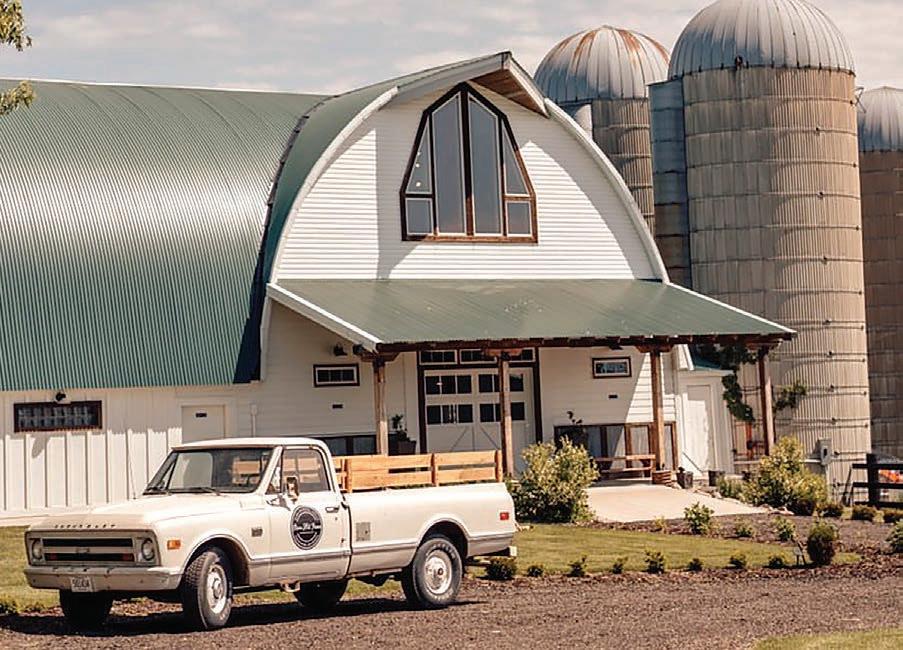

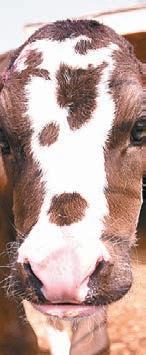




























Stone Hill Farm





from page 3










































mid-week live music nights and even church services in the future, but for now they’re relishing in the site providing not only a family business, but a place to call home.








Jeremiah farms the surrounding land with his father and works in a family business.

They live at the farmstead with their son, 21-month-old Arlo, and they have a second child due this February.




“This isn’t just a public facility or place; it is our home,” Kalie said. “This is where our kids are going to grow up. It’s been important for us to be together for our kids and their futures and the lifestyle we’re able to create together.”

















































































































































































320-761-9918
Jeremy Sunderman Cell: 320-267-7712


129 Main St. South, Sauk Centre, MN EMAIL: ahconcreteinc@gmail.com



Paynesville 320-243-3938






www.feedcomn.com











Grade: 12



Parents: Keith and Patty Woitalla Holdingford FFA Chapter

Tell us about your FFA program and your involvement in it: In the Holdingford FFA program I am the 2022-2023 Chapter President. I help plan and implement different activities throughout the year, and am an active participant in meetings. I have been a member for five years, and have been a chapter officer for four years. I also compete in the milk quality and products career development event and the employment skills leadership development event. This year I also completed my Minnesota FFA State Degree, and was ranked as Star in Agriculture Placement at regionals. I completed three supervised agricultural experience proficiencies in the categories of: agricultural service, diversified crop production, and dairy production. My State Degree, Star in Agricultural Placement, CDE team, LDE, and all three of my SAEs are going to state this year.


What is the focus of your supervised agricultural experience project and why did you choose this focus? My SAEs in agricultural services and diversified crop production focuses on me working for my dad’s custom harvesting business, Green Diamond Custom Baling and Harvesting. My SAE in dairy production focuses on my duties and experience on my family’s dairy farm, Woitalla Dairy, LLC. I chose these because they are family-owned businesses I have helped with almost daily for the past five years, so I made my SAE projects out of my time and experience.






Tell us about your SAE project: My SAE in agricultural services includes me helping with everything from tillage practices, keeping up with modern day production practices, machine maintenance, working with customers, and much more. Diversified crop production consists of helping with different types of forage production, grain production, machine maintenance, and lots more. For my dairy production SAE I help with milking, clean barns, birth calves, treat cows, record keep, mix feed, among other tasks.


What other hobbies and interests do you have outside of FFA? This past year, outside of FFA, I had the opportunity to serve as a Stearns County Dairy Princess. My hobbies include caring for animals, detailing tractors, and occasionally fishing.
What are your plans for the future, if any, and how does FFA play a role in those plans? I am going to attend Ridgewater College in Willmar for an associate’s degree in Agribusiness with a crop emphasis. FFA helped with those plans because my two SAEs that pertain to crops really sparked my interest and passion for that side of agriculture.

Valentine’s Day is the holiday that for centuries has been posed as a day of appreciation for those dearest to us.
In a community of agriculturists, it might be helpful to discuss the five love languages as they apply to a farmer. Traditionally, the five love languages are physical touch, quality time, acts of service, gift giving and words of affirmation.
These concepts might be misinterpreted by an unseasoned farm spouse, so let’s spell it out.


We’ll start with physical touch. For farmers, this could be a hug and a kiss at the door before they are off to spend the day in the field. Then, upon coming in from evening chores, a nice foot rub or back massage will make them feel most appreciated.
Say you’re riding to the feed store with your spouse and the old farm truck bench seat makes you feel miles apart. Scoot next to your partner and remember to turn the radio to the daily market report.




Now clear your calendar for some quality time primarily between April and October. Whether your spouse is running grain to town or cultivating the next field, there’s always room on the fender in the passenger seat or in the hayloft, stacking bales in 100-degree heat.



This particular love language can accompany acts of service like butter on bread. Say your spouse



needs to take a bale of hay to the farthest pasture; ride along and open the gate. Could they do it themselves? Probably, but it’s the effort and time that can make their day.
Don’t get me wrong, quality time and acts of service can certainly have a notso-happy effect on your partner – for example, sorting cattle and letting the wrong black calf run past you into the opposing lot. This tends to test the strength of your partnership.





This is a great time to incorporate the fourth love language, words of affirmation. Saying things like “I let that calf slip past because I was distracted by how straight your corn rows are” might help avoid conflict.
Last, but not least, is gift giving. Even though when Christmas rolls around many farmers can’t think of anything they might like as a present, a trip with them to the implement dealership or sales barn with someone else’s checkbook will certainly make their day.
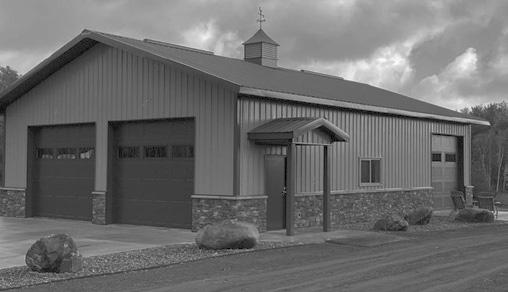








Now this is all said in good humor, but take time to appreciate the special bond you and your spouse may have. Though life can get tough and cattle can go into the wrong pen, it’s how we handle those situations that make moments with that special someone worthwhile.

Community formed through square dancing
BY JAN LEFEBVRE STAFF WRITER







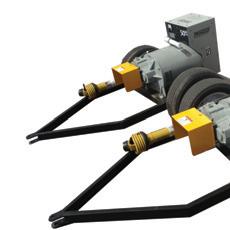






WEST UNION – One Sunday afternoon each month, the basement of St. Alexius Catholic Church in West Union

fills with music and the voice of Larry Johansen. Two to three squares of dancers swing their partners, promenade and do-si-do as Johansen directs them, sometimes by speaking and sometimes by singing.

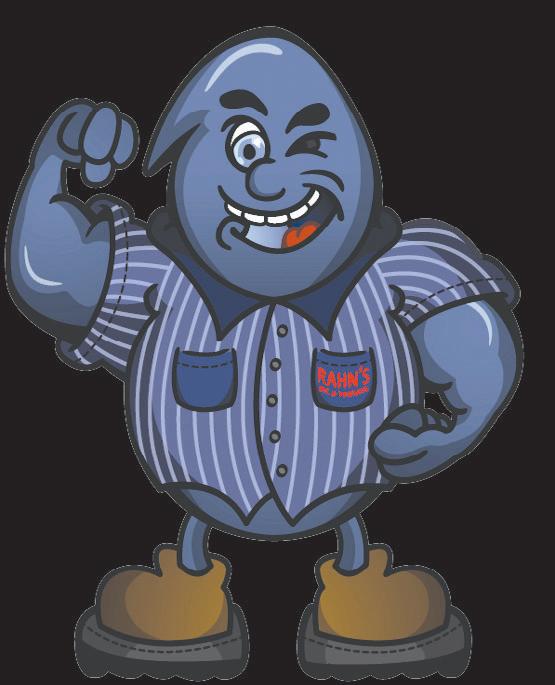
At the Jan. 15 dance, Gilda Gieske, president of the Rockin’ Country Dancers square dance club, stepped out of the dancing for a few minutes to stir a crockpot full of sloppy joe meat. Each dance at St. Alexius ends with a potluck. Gilda and her husband, Dan Gieske, have been square dancing with the club since it started more than 20 years ago.
“When you come and dance with a bunch of people you enjoy, it’s a good time,” Gilda said. “It’s not about being right. You can see that we’re screwing up all the time and Larry’s laughing. It’s about getting together and having fun.”
The Gieskes were drawn into square dancing by their children.

“Our kids were homeschooled,” Dan said. “A homeschool group started square dancing, and our kids were looking for something to do and joined. They got us into it, and we’ve been doing it ever since.”



The Gieskes took lessons from Johansen. Dan said he appreciates the exercise square dancing gives him.
“It’s not like regular exercise where you think, ‘I’ve gotta get through this,’” Dan said. “That’s a side benefit, having fun!”
For 45 years, Johansen, a member of the Minnesota Square Dance Callers Association, has been providing calling across the state. For more than 20 of those years, he has done the calling for the Rockin’ Country Dancers.


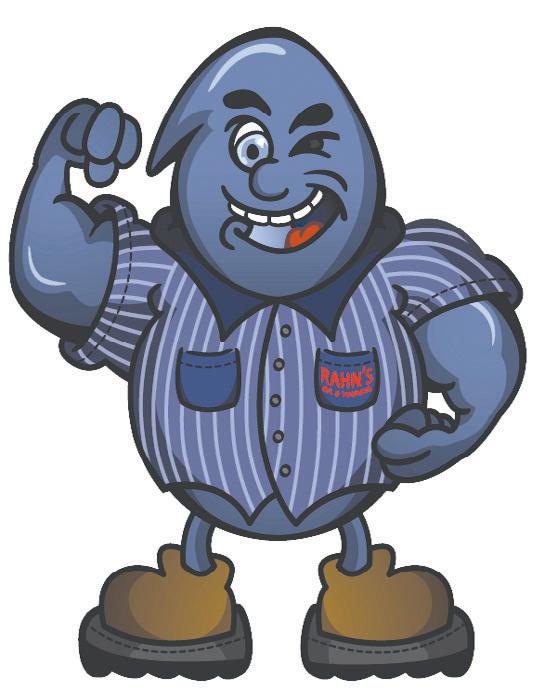


Whenever dancers descend the steps to the basement of St. Alexius, they are greeted by the sounds of laughter. The goal here is fun, not precision.
Before joining their first dance event, new dancers take a few lessons, most often with Johansen himself, so that they have basic knowledge of the calls and steps. However, the square dance events are no-pressure gatherings. The bar is set low for skills and dance-step knowledge. Sometimes the loudest laughter comes when a square













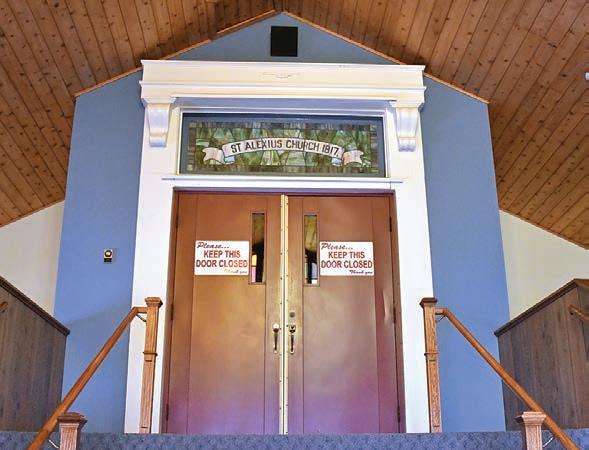

























































Square dancing
from page 9

Although most of the attendees at the event were of a more seasoned age, dancers were of all ages. Teenaged siblings Sarah, Talia and Elliot Winkley came from Minneapolis to dance with their grandpa, John Carlson, and his new bride, Rita Carlson. The couple married in June. John had asked his grandchildren to take lessons for the wedding so that they could square dance together there. The kids had so much fun that they now come to West Union dances as often as possible.
“It’s a chance to get out,” Talia, said. Sarah, agreed.

“And, we get to be with our grandparents,” she said. “We always have adventures.”
Their brother, Elliot, rarely took a break from
the dancing, working up a sweat.
“Square dancing is fun,” he said. “Since I’m homeschooled, it’s a good way to interact with other people.”
The Rockin’ Country Dancers club was
formed 20 years ago by the Christen family, with three generations now members.


At the January dance, Don and Linda Christen were there with their son’s family, Glen and Becky Christen and their children – Mitchell, Noah, Alissa, Olivia and Clara. Daughter Alexandra couldn’t make it that day but also dances when she can.
Becky is vice president of the club, and Don is treasurer-secretary.
“We’ve always enjoyed dancing as a family,” Becky said. “It’s that time we get to spend together. Sometimes the kids might groan a little before going to a dance, but the smiles on their faces show us they’re enjoying it.”
They first got into dancing because of Glen’s parents.
“Glen and I took
lessons when our oldest were 2 and 4 years old,” Becky said. “Glen’s parents would be at the dances. They had been square dancing for a lot of years by then.”
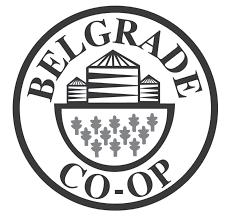
Each of Becky and Glen’s children began dancing around the age
of 8, but the youngest, Clara, began dancing quite early.
“Clara’s been dancing her whole life because she was on our hips or Glen’s shoulders when we danced,” Becky said.
“I think Glen and I will always square dance.
The older kids come back when they are able to and still dance with us, so I think it’s something we’ll always do.”
Becky and Glen are dairy farmers. Their children attend Sauk Centre schools and are involved in numerous sports and activities. With chores and school commitments, it was tricky to set dance times.





“That’s why we dance on Sunday afternoons,” Becky said.
Glen’s parents, Don and Linda Christen, started square dancing in 1982. They have even gone on an Alaskan cruise that Johansen organized for a group of square dancers.



“We danced every day on the cruise ship,” Linda said. “That was a really fun trip.”
She has seen some changes in square dancing through the years, especially in dress.
“When we first started dancing, everybody had square dance clothes on,” Linda said.
Square dancing page 12





































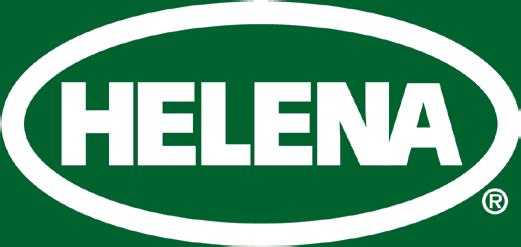












Vacationing on
the farm
Dairy barn converted to destination getaway
 BY TIFFANY KLAPHAKE STAFF WRITER
BY TIFFANY KLAPHAKE STAFF WRITER

Belgrade – A renovated tiestall dairy barn awaits guests of Feathered Acres Learning Farm & Inn. Trisha Zachman goes from making up extra beds and fluffing clean towels while also making time to feed the pigs, collect eggs from the chickens and brush out the llama. While the inn is open year-
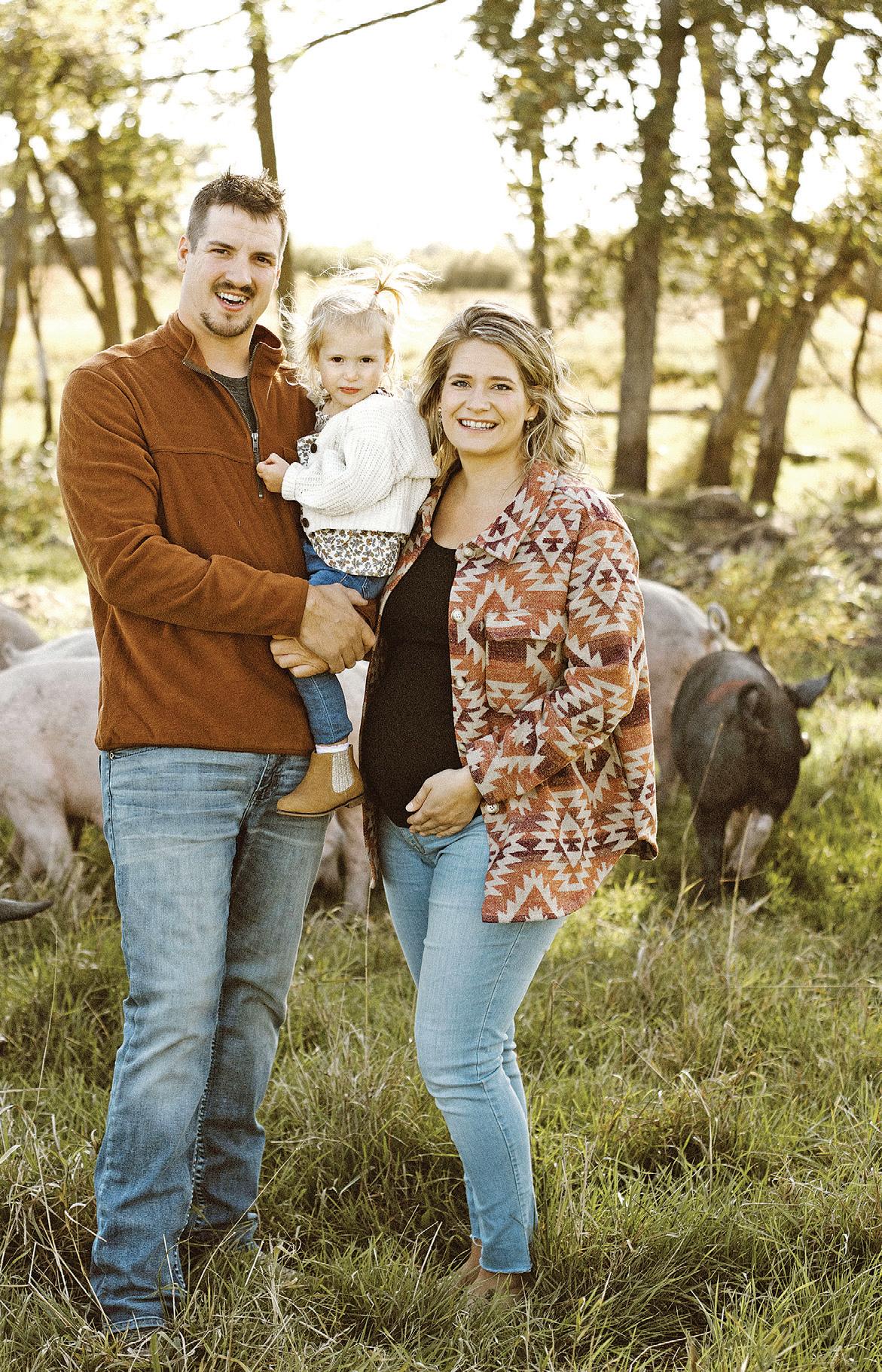
GO LARGE WITH SMALL PAYMENTS.





LARGE EXCAVAT O R FINANCING & CASH REBATE S








Pay as low as 0% APR* on a new Bobcat large excavator for up to 24 months* OR In lieu of financing receive rebates up to $15,600 USD* / $20,300 CAD*


round, May to September is by far the busiest for Zachman and her husband Nolan. They have guests booked to stay in their renovated dairy barn turned Airbnb every day of the week. People travel from the Minneapolis area to the working regenerative Belgrade farm, but some visitors come from as far away as Demark and India.
“They like to compare their farm back home to farms here,” Zachman said.

The barn is home to two different guest rooms that inn-goers can choose to stay in or, depending on their group size, they can rent the whole barn. The vacation destination Zachman page 15
Large excavators from Bobcat® offer the maneuverability and transportability needed for a wide range of jobsites. Innovative features provide the quality and versatility you expect from the Bobcat brand, plus leading cycle times, powerful lifting capabilities and impressive reach. Bobcat large excavators give you the size, strength and confidence to get bigger jobs done.
*Offer ends 3/31/2023. Available at participating and eligible dealers only. Offer may vary by product type, series, model and select units in dealer’s current inventory. Must take delivery from dealer stock by 3/31/2023. Offers available on new equipment in US and Canada only. Some restrictions apply. Length of contract and rate may vary. Monthly payment subject to change. Prior purchases not eligible. See dealer for details. Financing provided on approval of credit by authorized Bobcat finance providers to well-qualified buyers. All finance programs and rates are subject to final approval by the applicable Bobcat finance provider and are subject to change at any time without notice. Administrative fees may apply. Offer not available to government accounts, national accounts and municipal/ utility bid customers. Bobcat Company reserves the right to extend or discontinue any of these programs at any time without prior notice.




















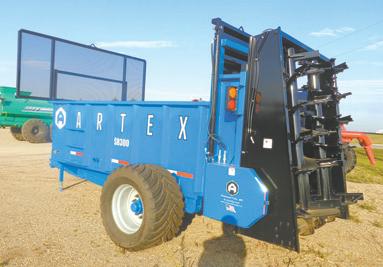









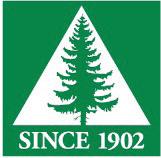






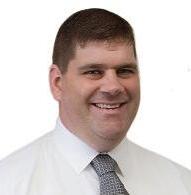
Zachman from page 15

Zachman also works to tie in the history of Stearns County to the tour and the inn.

“Our farm used to be a dairy farm and I talk about why there are so many dairy farms in this area,” she said.
The main guest room is named the Molitor Milk House, honoring Zachman’s maiden name; the newest room is called O’Halloran House, after her mother’s maiden name. Zachman uses these names to further explain the history of Stearns
County and the German and Irish ancestry of the area.
Running the inn has been Zachman’s full-time job since it opened in May of 2021. Her husband Nolan helps with the heavy lifting while also doing crop consulting. Their two-year-old daughter, Ester loves helping out and take care of the animals. Zachman is also expecting a second child in February.

Combining the life of an innkeeper and farmer has been a fulfilling mission for the family.


“I love talking to people and meeting people,” Zachman said. “And I love agri-




culture.”
The couple is continually focused on the future and ways to improve the farm, their family life and the inn. They’re in the process of adding a balcony to the barn and they’ll be welcoming more animals soon.


This summer, Zachman hopes to offer dinner on the farm for guests, with live local music and food with the landscape of pigs and sheep in the background. The farm site is home to a river, trees and open spaces.




“I don’t know of any other farm stays like this in Minnesota so I am learning as I go,” Zachman said.



























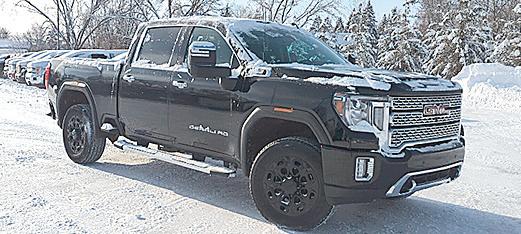


















I made good progress in the woods until the end of January. By then the snow was deep and the weather turned cold. From then through the middle of February, below-zero temperatures were as common as sunrises. Days when it warmed a little were often windy. It just wasn’t good weather for being out in the woods.
A few times I put on snowshoes and trekked down the path to the west property line, south through the woods nearly to the field, and then back through the woods. Snowshoes made walking a little easier than repeatedly falling through the snow, but it was still a workout and not one that I wanted to carry a chainsaw through. The next times I took the chainsaw, I learned that a snowshoe trail is not sufficiently packed to make walking much easier.
February 15. My dad would have been 101 today. I always think of him as I hear the territorial call of the chickadees about this time of year. I didn’t hear any today but have heard them occasionally since the middle of January. It’s too cold, it’s too windy and there is too much snow for a chickadee’s heart to turn toward love.







I pulled on my snowsuit, boots and a knitted hat to take a walk through the woods. “Take a walk” is such an understatement. I did my best to follow remnants of my last trail and those of the deer that have made a regular fox and goose run of the woods.

Following footsteps is a tremendous balancing exercise. To place feet precisely with the distinct possibility of falling through semi-packed snow or sliding off the trail keeps one literally on one’s toes. When I left my own trail behind and followed that of a deer, it was even more uncertain. Little hooves don’t pack much in surface area but still do make it easier than just plunging through the snow.
Once I was in the deeper part of the woods, I decided to make a destination of the pine grove south of the woods. Having a purpose gives meaning to daily living and daily workouts. I would look for deer sheds.





A week ago a young neighbor stopped by to introduce himself. He actually lives about 50 miles from here but has property along the river south and east of here. He asked if he could stop in a few times over the next couple of weeks to look for deer sheds along the river and in our pine groves just north of the river. Though we like to look for deer sheds, too, if he wants to look and can find any, well, more power to him. I’ve been out nearly every day and haven’t found any.
Those who regularly hunt for shed deer antlers talk about “photoperiod” as the determining factor for bucks to lose their antlers. It means the ratio of dark to light, or just plain old length of day, and that timing is just about right from February through March. Testosterone levels change after the rut is over. Calcium is reabsorbed from the antler weakening its attachment to the skull and resulting in the antler dropping off.









Our young neighbor said he walks about 150 miles each year looking for sheds.

I tramped through the pines, following deer trails and watching for likely spots of increased deer activity. I found a young pine tree nearly girdled by deer rubbing the trunk. If it survives, the upper part might be next year’s Christmas tree. I found downed trees and plenty of work for when I can get the chainsaw in. I found coyote tracks as well as those of squirrel and rabbit. I found several spots where deer urinated in their beds before leaving them for the day.
What I didn’t find was deer sheds.










GAMEDAY Grub
Want your favorite recipes to be featured in Country Acres?
Contact Grace at grace.j@star-pub.com
Buffalo Chicken DipCrockpot Carnitas
• 1 rotisserie chicken, shredded
• 3 (8-oz.) blocks cream cheese
• 2 cups Cheddar cheese, shredded
• 3/4 cup buffalo sauce (I use Sweet Baby Ray’s)
• 1/2 cup ranch dressing



• 1/2 cup blue cheese crumbles
Throw all ingredients, except blue cheese crumbles in crockpot. Cook on low for 3 hours or until melted together. Top with blue cheese crumbles and serve with chips. This is great for a gameday watch party.
• 1, 4-pound pork shoulder roast
• 1 tablespoon chili powder
• 1 teaspoon cumin
• 1 teaspoon oregano


• 1 teaspoon salt
• 1 teaspoon pepper
• 3/4 cup orange juice
• 1/4 cup lime juice
• 4 cloves garlic minced
• 1 onion quartered
Rub pork roast in chili powder, cumin, oregano, salt and pepper. Place roast in crockpot and add remaining ingredients. Cook on low for 8 hours or on high for 4-5 hours. Remove roast from crockpot and shred pork, add shredded pork back into the crockpot and let cook an additional 30 minutes. Remove pork from crockpot and spread across baking sheet. Broil in oven for 3-4 minutes to brown the edges of the pork. Serve like nachos or tacos.
SIGN Design





SUBMIT YOUR FAVORITE RECIPES on our website at www.countryacresmn.com

Field Operations Specialist SUMMARY/OBJECTIVE

This position is responsible for safe, reliable application of crop nutrients and crop protection products for farm accounts and customers serving central Minnesota.

Essential Functions Custom Applicator/Delivery:














Communicate daily activities, needs and accomplishments with agronomy operations supervisor. | Apply agronomy products to customer’s fields as recommended. | Assist in housekeeping and maintenance of facilities and equipment. | Assist with outbound and inbound agronomy products. | Operate all equipment and vehicles according to Belgrade Coop policy and procedures along with local, state, and federal laws.

| Ensure safety compliance. | Maintain and record maintenance of application equipment, tending equipment, NH3 equipment, pickups and side dress units. | Record field application logs. | Assist with delivery of dry and liquid fertilizer, NH3 and crop protec tion products as assigned by agronomy operations supervisor. | Provide courteous customer service



Work Environment
This position is performed in outside weather conditions, seasonally, with opportunity to work in a shop (temperature-controlled environment) in the off-season or winter months.
Physical Demands

The physical demands described here are representative of those that must be met by an employee to successfully perform the essential functions of this job.

While performing the duties of this job, the employee is regularly required to talk and hear. This position is very active and requires standing, walking, bending, kneeling, stooping, crouching, crawling, and climbing all day. The employee must frequently lift and/or move items over 50 pounds. Specific vision abilities required by this job include close vision, distance vision, color vision, peripheral vision, depth perception and ability to adjust focus.


Position Type/Expected Hours of Work


This is a part-time/seasonal position with potential for full-time employment with the right candidate. Hours of work and days are Monday through Friday, 8:00 a.m. to 5 p.m. with a requirement of extra hours during spring and summer application season and fall drying season. Benefits will be offered with full-time status. Overtime pay is offered for weekly hours over 40 hours.
Preferred Education and Experience
1-3 year experience of operating farm machinery or heavy equipment | Commercial CDL driver’s license with tanker and hazardous endorsement. | Commercial applicator’s license from Minnesota Department of Agriculture. | *Willing to train the right candidate to obtain necessary licensing

OTHER DUTIES
Please note this job description is not designed to cover or contain a comprehensive listing of activities, duties or responsibilities that are required of the employee for this job. Duties, responsibilities and activities may change at any time with or without notice.
Belgrade Cooperative is a farmer-owned Cooperative servicing central Minnesota and is an equal opportunity employer. Full-time status opportunity with benefits, paid time off, retirement, anda flexible work environment.






HOW TO APPLY
Please email your resume to Jessica Jones, Operations Manager at Belgrade Cooperative, at jessicaj@belgradecoop.com



we care about your community. because it’s our community too. simple human sense
Variations in
Rural artist finds her calling
 BY JAN LEFEBVRE | STAFF WRITER
BY JAN LEFEBVRE | STAFF WRITER




CLARISSA – At a rural home in Todd County, white silk and homemade felt are being transformed into vibrant, colorful art. There, Laurie Connolly works in her studio garage during summers or her smaller basement studio during winters, combining the dyeing of fibers with leaf printing to create fabrics for making scarves, totes, wall hangings, runners, book covers, quilt squares, greeting cards and more.
Connolly’s business, Mystic Fiber Wool and Silk, captures the mystical nature of her art. Although Connolly has honed her artistic processes, differences in fiber and the gut-feeling method she uses for mixing dyes leads to variations. Connolly said the final results of each work still surprise her, and she likes that aspect of her art.

“I enjoy doing it and seeing what is going to come out,” Connolly said. “Your colors take differently on wool than on silk. I can visualize the hue I want, but it sometimes goes in its own direction.”

The name of her business honors her horse, Mystic Gold, who was orphaned as a foal.
He’s half Arabian and half mountain horse,” Connolly said. “He has a lot of spirit and a lot of issues.”
The horse is lucky as well. When a tornado came through Connolly’s land last spring, it destroyed her tree line and blew the horse’s shed off its foundation and onto its side, but Mystic Gold was unhurt. The event shook him, however, so Connolly got him a rescued mini horse named Sal for a companion, and both are doing well together.
Connolly’s artistic process falls into an art category called “botanical leaf printing on silk,” but her art goes beyond that description. She uses other

Connolly page 21
BALE KING bale processers
NOW AVAILABLE
With BALE KING You Can Do It All!

• Reduce feed and bedding costs
• Give every member of your herd the same feeding and bedding advantages the dominant ones take
Model 5300: Process any round bale. Comes with twin agitator feeding system. Shown with available 3rd bale clamping system.
• Give your cattle more palatable feed


• Prepare more uniform bedding with less straw

• Manage more livestock with less work
• Chop and spread for erosion and odor control or add fiber to soils

• Chop and spread to cover or cushion specialty crops
• Significantly reduce TMR mixing times by preprocessing your dry matter


Model 8200: Process square or round bales. The twin agitator system provides grip on both sides of the rotor to manipulate square bales.




Connolly from page 18

fibers as well. She also makes her own felt from merino-wool roving. The leaves she uses are always ones she finds in nature, not artificial or dried from stores, and her equipment is modified and personalized to fit her process.
During the summer, customers can buy Connolly’s work at area craft fairs and fiber festivals. Her creations are also sold at Knotty Bobbin Embroidery in Dorset during the summer months.
It took many years for Connolly to call herself an artist. Growing up on a farm nearby in Eagle Bend, she did not hear people use the term much.






“I’m most proud of actually calling myself an artist and being able to communicate that with people. This is my artistic part because I’m creating, making my own colors, making my own style.”

Throughout all of her artistic pursuits, Connolly places value on keeping materials as natural as possible and producing very little waste.
“It’s growing up on a farm, I think, where you use everything you’ve got,” Connolly said.

She said she likes imagining new ways to use the fabrics she creates. It is part of the playful way she approaches art.
She knitted, cro-






cheted and sewed – skills learned from her mother and sister while growing up on a farm. When she came across a $99 spinning wheel, she delved into fibers further. She began networking with other people through fiber groups and attending Shepherd’s Harvest Sheep and Wool Festival, a yearly event at the Washington County Fairgrounds in Lake Elmo.


Connolly’s artistic vision was forming.
Marriage, children and work as a seamstress, kept her busy through the 1980s, but she kept spinning yarn and added in weaving. She also took a class in dyes that she said opened her eyes to the many possibilities of coloring fibers.
of HeartFelt Silks located in Bayport, Wisconsin, introduced Connolly to leaf printing on silk. She absorbed the basic process and began to develop her own style and methods.


Today, her process for printing begins with 100% silk from China, supplied by a company in California. First, she soaks the silk in a mor-

dant to ensure a richness of color.
“Mordants make the fabric accessible to the dye,” Connolly said. She soaks the silk overnight and squeezes out the excess and lays the silk on a piece of plastic. Connolly reuses plastic as often as possible to reduce waste.

She lays leaves on the fabric in a way that
comes to her through artistic instinct; the leaves themselves are carefully selected for each piece. She has used sumac, raspberry, bleeding heart, cosmos, cedar, pine needles and more. “I try everything,” Connolly said. “I do
Connolly page 23



















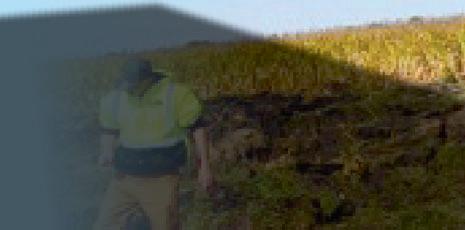











































Connolly from page 21
ditch dive a little bit for leaves.”
Her favorites are ginkgo leaves, which she said are a bit harder to find. She likes the shape and stamina of the leaves and the idea of the ginkgo tree, the oldest living tree species. She freezes the leaves and can usually use them in her work four times.“They are so precious, but they are so thick,” Connolly said. Once the leaves are placed, she mixes dye together with rainwater she collects and heats, in a way that resembles a chef working without a recipe. The rainwater is free of iron. She adds dye without measuring, imagining the final color.
Using brown, undyed paper towel sheets one at a time, she soaks up some of the prepared dye until the paper towel is wet with it and lays it across a section of the fabric, repeating until all of the fabric is covered with paper towels. She presses on the paper towels so the fabric will evenly soak up the dye. The leaves block the dye, creating leaf prints in relief.
“This process is pretty close to recess dying,” Connolly said.







Once the paper towels are removed, Connolly sprays the fabric with vinegar to help set the dye. Then, a top
layer of plastic is placed over the fabric. She rolls the fabric tightly around a dowel and steams the piece. Her steamer is one she designed herself using a restaurant-style steamer her brother modified.
The funds for the steamer, and some other materials, came from grants she received through the Five Wings Arts Council and the McKnight Foundation, which help support artists in the area.



“They’ve been wonderful to me,” Connolly said.
Connolly also dyes wool felt that she makes herself using wool roving, which has the look and feel of clumps of cotton batting. She uses a Norweigan style of felting to keep the pieces very fine and she fuses the tufts together using soap.

Once the felt is dry, she uses the same leaf placement and dying process that she uses with silk.

“When I work with the silk, I like that better; when I work with the felt, I like that better,” Connolly said. She looks forward to a time when she can retire from her work sewing cushions for an outdoor furniture company and dedicate her time solely to her art.
Her art is a piece of her.“It’s your soul,” Connolly said. “It’s what you can produce that comes from inside of you, versus if you copy a pattern. For me, this is what I really want to do.”









Greenhouse, meat processing descending on West Central Area High School
Learning leads to giving TO COMMUNITY






 BY SARAH COLBURN | STAFF WRITER
BY SARAH COLBURN | STAFF WRITER
























BARRETT – High school students in the Barrett area will be growing vine-ripened produce and processing fresh cuts of pork and beef to benefit people in need at the Grant County Food Shelf.



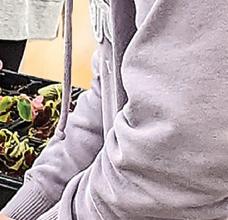
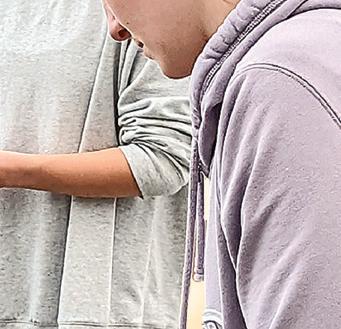
With the help of nearly $700,000 in grants and community donations, West Central Area High School has added a fully automated, modern greenhouse to its campus and will launch a mobile meat processing trailer this fall.



The effort helps provide a hands-on learning opportunity for students and will relieve hunger in the community.


“We’ve got fresh, local produce and meat, and why not have it put directly on the shelves?” said Eric Sawatzke, the school’s FFA advisor.
As a teacher and advisor, Sawatzke said it is his job to get students excited about agriculture.

“It’s the only way to make education come alive, to really live it and do it,” Sawatzke said. “If they don’t experience (agriculture) before they’re 18, they will not eld.”




to live it and do it, Sawatzke said If they dont will not look at it as a career fi






 PHOTOS SUBMITTED
Alexa Blume, (from left) Kaylee Gehrke, Brooklyn Strobel and Sidney Huntley propagate new plants from larger parent plants which will be sold to fund future greenhouse project supplies.
Abigail McGee, Aidan Porter, Brielle Floden and Mia Nelson inspect plants for pests or disease.
Barrett FFA page 2B
PHOTOS SUBMITTED
Alexa Blume, (from left) Kaylee Gehrke, Brooklyn Strobel and Sidney Huntley propagate new plants from larger parent plants which will be sold to fund future greenhouse project supplies.
Abigail McGee, Aidan Porter, Brielle Floden and Mia Nelson inspect plants for pests or disease.
Barrett FFA page 2B
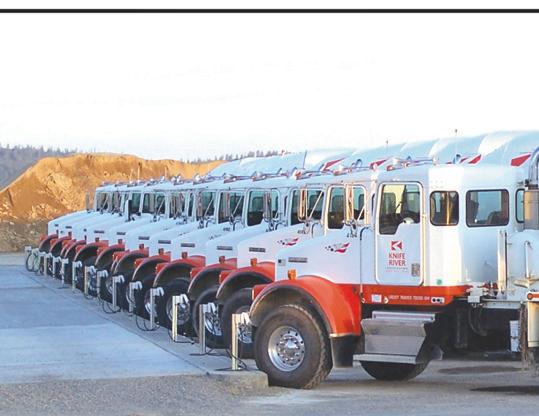












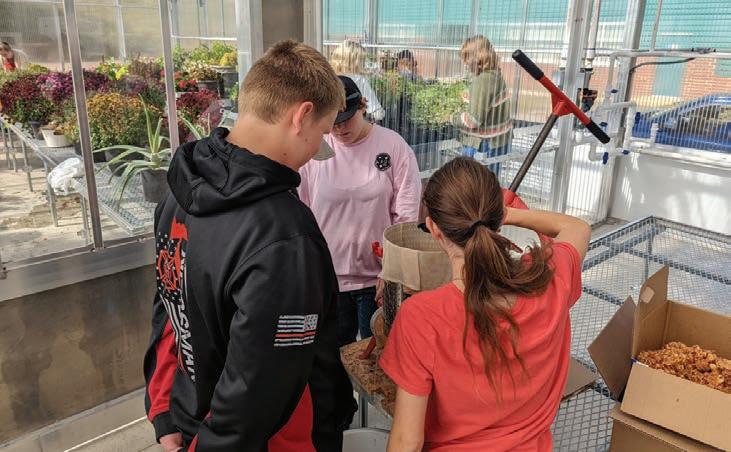
Six times a charm
Gathje siblings achieve American FFA Degree
 BY TIFFANY KLAPHAKE | STAFF WRITER
BY TIFFANY KLAPHAKE | STAFF WRITER







EDEN VALLEY – What started as a goal for the eldest of six Gathje children also became the goal for the rest.


Over the span of a decade, Scott and Denise Gathje’s half-dozen children – Joe, Anne, James, Katherine, Greg and Jonathon – have achieved the American FFA Degree, the highest degree possible for the organization’s members.
The American FFA degree is achieved by less than 1% of FFA members.

Tracy Huhn began teaching agricultural education at Eden Valley-Watkins High School in 2008 and was the FFA advisor for all of the Gathje children.
The FFA chapter has grown to include three advisors, Huhn, Tyler Warren and Kayla Gratz.
“It made me proud to see all of them go all the way to get their American Degree,” Huhn said.

All of the Gathjes held the office of president or vice president with their chapter but each chose their own path in FFA. They competed in a variety of career development events and took classes of interest. Some went on to be regional officers; others attended the Washington Leadership Conference in Washington, D.C.
“It was pretty cool to see all of them go as far as they did,” Scott said.
Scott was in FFA but said it never crossed his mind to get his American Degree.
Denise said she enjoyed seeing her children grow and develop leadership skills. She said FFA allowed her children to practice skills of interviewing, writing, filling out applications and making connections that encouraged them to pursue other opportunities.
“They all enjoyed it,” Denise said.
The Gathjes milk 65 Holstein, Brown Swiss and Jersey cows. They farm 200 acres of alfalfa and corn and raise their youngstock. In addition to the cows, they also have a horse, ducks, sheep and chickens. Each of the Gathje children showed the various animals in 4-H.
For the kids, the relationship with FFA started in 2008 when Joe joined FFA as a freshman. Huhn encouraged Joe to begin a supervised agricultural experience and obtain the State FFA Degree.
Joe said he enjoyed his time in FFA and was involved in dairy evaluation, dairy foods, helping with the chapter corn drive, helping with the chapter corn test plot and becoming a chapter officer.
“FFA was what I looked forward to,” Joe said. “It really helped carry me through school.”
After achieving the State FFA Degree, Huhn encouraged Joe to try for his American Degree. Joe agreed to apply.
In 2012, at the 85th National FFA Convention and Expo in Indianapolis, Indiana, Joe walked across the stage to receive his American FFA Degree.
Joe went to college at South Dakota State University for agricultural science and now works at a cooperative, helps his parents on the farm and runs a
manure pumping business on the side.
When Anne started high school, she too joined FFA, but she chose to be on the meat judging, dairy handling and prepared public speaking teams. Anne said she enjoyed her time in FFA so much that she chose to pursue an agricultural education degree at South Dakota State University. While in college, she decided to take what she learned in her business and accounting classes to form a career.
“I am currently working in accounting for Novita Nutrition, an animal nutrition company located in Aurora, South Dakota,” Anne said. “With the background and connections I have made in the agricultural industry, it has been fun to be growing my accounting career within the agricultural industry.”



After seeing his two older siblings meet the requirements and get their American Degree, James also set his sights on the degree. He had already met many of the requirements with his dairy production SAE, volunteering with his 4-H club and working on his parents’ dairy farm. James was involved on the dairy judging team, was a chapter and region officer, and attended the WLC
“I loved that I got to travel all over the Midwest and to WLC,” James said. “I was very grateful for that.”
James said because he had a positive experience while in Washington, D.C., he went to school at St. John’s University for political science and economics. While in college, James returned to Washington, D.C. for an internship.
“FFA has impacted me in so many ways,” James said. “The skills are very transferable to real life.”
James credits FFA for helping establish his skills in writing, job interviewing, leadership development and teamwork.
Katherine became the fourth of the Gathjes to get

her American Degree and credits her active chapter and her advisors with spurring her on.
“The leadership experiences I gained in FFA gave me the foundation for my career,” Katherine said. “It gave me the good leadership and good communication skills I needed to succeed.”
Katherine now oversees the leadership development program for young professionals at the Kanas City Chamber of Commerce.
Unlike the rest of his siblings, when Greg joined FFA, he was in poultry judging and took classes in fish and wildlife. Greg said he never considered getting his American Degree until he walked across the stage at the Minnesota State Convention and received the State FFA Degree. Then, the American Degree became a possibility.

Greg said he enjoyed being in FFA with his friends and getting to know kids from other schools.
“FFA helped expose me to the career path I am on,” Greg said.

Greg is attending Bemidji State University and majoring in biology.
Jonathon also joined the poultry judging team. Additionally, he joined the parliamentary procedure team and helped on committees. For Jonathon’s SAE project, he chose sheep entrepreneurship. He purchased two bottle lambs and raised them. Jonathon now has six ewes and one ram. Jonathon wanted to get his American Degree not only because the rest of his siblings did but because he felt it was easy to do once he got his State FFA Degree.
“It is a nice final touch to my FFA career,” Jonathon said.
Jonathon attends Alexandria Technical and Community College for diesel mechanics and has a job lined up after his graduation this spring to work with Arnold’s Equipment in St. Martin.
America’s Farmers Grow Communities ...

The America’s Famers Grow Communities program is a singular effort seeking to give $5,000 grants to a variety of rural nonprofits, education efforts and rural initiatives in a streamlined way. We believe farmers know best which institutions and programs in their communities deserve funding, so we partner with them to direct the grant money.

• Since 2010, the America’s Farmers programs has awarded over $60 million to nonprofits, schools and ag youth organizations across rural America. From 3D printers and STEM education for small schools, to funding food banks in underserved areas, the America’s Farmers programs help lift up and support rural communities, one grant at a time.
• Entries for America’s Farmers Grow Communities (“Program”) must be received between 8:00 a.m. Central Time on August 1, 2022 and 5:00 p.m. Central Time on November 1, 2022 (the “Program Entry Period”). A Charity must use the Grant for one of the following types of programs: FFA, 4-H, school STEM program, food & nutrition program, science outreach program, maternal child and reproductive health support program, and support program to improve public health. 320-352-6564
LONG PRAIRIE PACKING CO. L
P.O. Box 148 • Long Prairie, MN 56347 320-732-2171




FFA peoples Get to know the Adriana
Behl - Junior

Tell us about your FFA chapter and your involvement in it. I am chaplain of the New London-Spicer FFA Chapter. I participate in many chapter activities, including FFA week, chapter meetings and the Veterans Day breakfast. I used to compete in the milk quality and products career development event before my team won the state competition. I now compete in the meats evaluation and technology CDE.
10098 County 11, Sauk Centre 320.223.2852 Brandon


To promote and create opportunities for the profitability and sustainability while promoting agriculture & enhancing our rural quality of life.
douglascountycornandsoybean.org




LLC. D





Adriana Behl
What is the focus of your supervised agricultural experience project, and why did you choose this focus? The focus of my SAE is animal systems. I chose this topic because I have always loved animals. I also wanted to learn more about their daily maintenance along with different diseases and genetics. Tell us about your SAE project. My SAE project is raising Nigerian Dwar f dairy goats. I started with two that I showed in 4-H, but we soon expanded to a herd of 13 goats and two alpacas. My sister and I raise them together. We show our goats at the Kandiyohi County Fair every year. We sell our wethers for meat, and we are hoping to start selling our goat milk soon in products like soaps and lotions.
What hobbies and interests do you have outside of FFA? I am also in 4-H. I am a club president along with the Leader’s Council president. I am also in the National Honor Society. I often participate in my church’s youth group in their many activities and service projects.




What are your plans for the future, and how does FFA play a role in those plans? I plan to attend college for animal sciences and eventually gain my doctorate in veterinary medicine. FFA has greatly influenced how I see the world. It and the agricultural department have introduced me to many animals and animal systems. With my meats evaluation and technology CDE, I can identify the different muscles of an animal along with the different areas of meat animals, which are most valuable. When I used to do the milk quality and products CDE, I learned how the quality of milk is affected by what cows ingest.
Tyler Ratka - Senior
Tell us about your FFA chapter and your involvement in it. Our FFA program is in its fourth year and has grown to around 50 active members. Our chapter is an aff iliate, which means any student who takes an agriculture class can join FFA for no cost. We now have two advisors and compete in many contests throughout the year. I compete in parliamentary procedure and dairy handling and previously competed in dairy evaluation and management until I competed at the national convention in 2021. I am the chapter president and also serve as the Region III president. I am active in many events at the local, region, state and national level. As region president, I also serve on the executive committee with the state off icers and other region presidents as well as the Minnesota FFA Student and Adult Board.
What is the focus of your supervised agricultural experience project, and why did you choose this focus? My SAE project is diversified agricultural production placement, and I chose this focus because I work on a farm raising crops and dairy heifers and enjoy this job.
Tell us about your SAE project. The farm I work on consists of around 500 acres of corn and soybeans with some rye cover crop and around 550 dairy replacement heifers for two dairy farms. On the crop side, I drive tractors and combine and can operate any implement on the farm. I also set up monitors and globes in the equipment as well as perform maintenance and fix things when they break. I help move heifers around, feed heifers, scrape pens and more. We also chop 100 acres of corn in the fall and 100 acres of rye cover crop in the spring for heifer feed. With the implementation of cover crops, we are also trying no-till and other management practices.

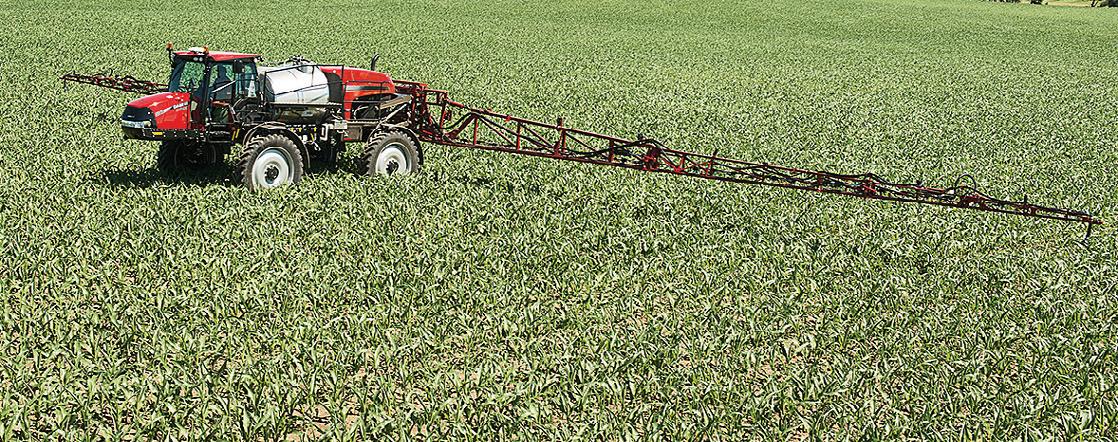
What hobbies and interests do you have outside of FFA? Outside of FFA, I am active in 4-H, the Minnesota Junior Holstein Association, the Minnesota Junior Brown Swiss Association and the Rocori trapshooting team, and I work on the farm. In 4-H, I show dairy cattle, compete in dairy judging, coach dairy knowledge bowl and serve as the Minnesota Dairy Project Development Committee youth representative. In MJHA, I serve as a director on the board, compete in dairy jeopardy and quiz bowl, and attend conventions and state show. I show at the state show for the Minnesota Junior Brown Swiss Association. These activities all keep me busy and help prepare me for a future in the industry.
What are your plans for the future, and how does FFA play a role in those plans? Next year, I plan to attend the University of Minnesota-Twin Cities for either animal science or agriculture business . I hope to stay active helping our FFA chapter and join Gopher Dairy Club to stay active in the dairy industry. After college, I plan to have a career in the industry that includes dairy cattle and business.
Hannah Moline - Sophomore
Tell us about your FFA chapter and your involvement in it. The New London-Spicer FFA Chapter is truly something special. I wouldn’t even consider it a program. We are one, big family here in New London. I am the sentinel. Alongside seven officers, we have over 60 active members, but we couldn’t do it without our two amazing advisors, Jeff Gaberielson and Tracy Tebben. I take pride in being able to wear my blue jacket with the town “New London-Spicer” on the back much like every other member. What is the focus of your supervised agricultural experience project, and why did you choose this focus? I focus my SAE on beef production. I grew up on a beef farm and have always enjoyed working with our cattle. Because we raise our own beef, I’ve always had the luxury of having homegrown beef. I feel that the beef industry is so overlooked, so I focus my SAE on just that.

Tell us about your SAE project. My SAE project is me working on my family’s farm. I help mend the calves and even get to help with giving them vaccines. I’ve learned many things from my dad who is head of the farm. I truly wish every girl my age had the opportunity to work with cows because I love sharing with people that I know how to handle a 1,000-pound animal. I want to show others the importance of the beef industry. What hobbies and interests do you have outside of FFA? Outside of FFA, I am always staying busy. I play volleyball year-round, and in the summer, I nanny for a wonderful family friend. If I’m not running around for FFA, volleyball or work, I find myself hanging out with my friends or family.
What are your plans for the future, and how does FFA play a role in those plans? I am planning on attending college after high school followed by nursing school. I have always loved caring for people so nursing will be a great fit for me. As far as my FFA career after high school, I hope to be awarded my American FFA Degree. I also plan on keeping agriculture around in my life as I get older whether that be having beef cattle or planting corn. Even if I’m not an active member, I will forever hold on to the lessons FFA taught me and use them in my everyday life.
Daniel Kiffmeyer - Senior




Tell us about your FFA chapter and your involvement in it. Our chapter is four years old, and I’ve been with it from the start. This year, we also got another advisor because our chapter has grown so much.
What is the focus of your supervised agricultural experience project, and why did you choose this focus? The focus of my SAE is construction, and I chose this because I am interested in going into the construction industry. I want to see if I like it.















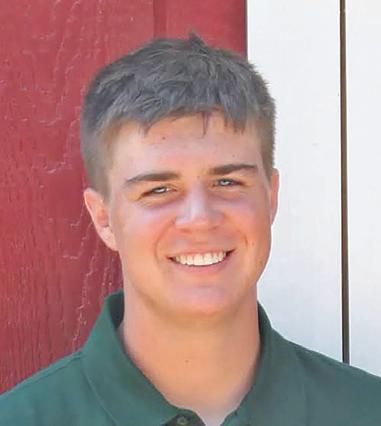

Tell us about your SAE project. For my SAE project, I work residential construction for my father, building new homes and remodeling.






What hobbies and interests do you have outside of FFA? Some other hobbies of mine are fishing, hunting, snowmobiling and being outside.
What are your plans for the future, and how does FFA play a role in those plans? I plan to go to college for construction management or go into the work force doing residential construction. FFA has helped me figure out what I want to do in the future, and it has helped me grow as a leader.
Emery Gabrielson - Senior
Tell us about your FFA chapter and your involvement in it. I am in the New London-Spicer FFA Chapter. I believe my FFA program is one of the best in the state. We have around 70 members who are all dedicated to our career development events and supervised agricultural experiences. There is always helping hands whenever it is needed. This year, I am so grateful to be the chapter secretary. My duties include keeping an accurate record of all chapter meetings as well as working with the other off icers to plan our chapter events. What is the focus of your supervised agricultural experience project, and why did you choose this focus? The focus of my SAE project is dairy products. I chose this as my focus because in my ninth grade year, I had the opportunity to compete at the FFA National Convention for the milk quality and products CDE. It was such a great experience and made me want to incorporate dairy products into my everyday life. This is why my focus of my SAE is dairy products.




Emery Gabrielson





Tell us about your SAE project. My SAE project is working at my local ice cream shop called the Deep Freeze. While working there, I make a variety of ice cream treats and sell them to customers. I make sure to always keep a clean work environment as well as making sure all food and dairy products are stored safely. I also make sure customers are satisfied with their items.
What hobbies and interests do you have outside of FFA? My other hobbies include being a captain on my school’s dance team, being in student council, National Honor Society, my local faith formation clas s and dancing at the Main Pointe School of Dance. Other interests I have include reading, hanging out with friends and family, and working at the Deep Freeze.
What are your plans for the future, and how does FFA play a role in those plans? My plan for the future includes attending college for a fouryear degree. After college, I hope to get a job and later in life get married and have children. FFA will play a role in deciding what I would like to get my college degree in as well as enrolling my future children in FFA.
Blue, gold growth




Osakis FFA program thriving
BY GRACE JEURISSEN | STAFF WRITER













OSAKIS – A sea of blue jackets with ribbons of gold fills the Osakis High School ag classroom during events. Each jacket is worn by a student looking to find their place among thousands of youths participating in one of the most prolific organizations in the country for agriculture – National FFA Organization.
Osakis has been an active chapter for some time, but the enthusiasm and passion the officer team, administration and FFA advisor have for the program has nearly doubled the group of enrolled FFA members at the school over the last year.
Lyndsey Middendorf is a senior at Osakis High School and said she enjoys being a member of FFA.


“I love being in a group of people in blue corduroy jackets like a big family, meeting new people, showing the community what FFA is all about, and guiding the younger members to see what FFA is,” Middendorf said.
Fall of 2021 was a challenging time for the Osakis FFA chapter. They were lacking a full-time ag teacher and FFA advisor. This led to the community and students stepping into action to keep some-
thing they love moving forward.
Two community members stepped into the classroom as certified professionals to teach a number of the agriculture courses at Osakis. They split the day half and half. Then, for FFA activities and events, Principal Brad Hoffrath, Craig Will and the Osakis FFA officer team worked together to plan the annual tractor drive, fruit sales, chapter meetings and a trip to the National FFA Convention in Indianapolis, Indiana.
Madison Douvier, a member of the Osakis FFA officer team, said they worked together to keep their FFA team functioning.
“We were trying to do our best to schedule events and have members attend our monthly meetings,” Douvier said. We did our best to keep our chapter afloat while not having an advisor. Officers, including me, had to step up and take many roles that were
normally filled by the advisor.”



The Osakis officer team took the responsibility of encouraging other students to join the organization despite the absence of an instructor.
At the National FFA Convention, Eva Moore, the current Osakis FFA president, took the liberty of approaching various college students in ag education, encouraging them to apply to the Osakis school district.

Though Hailey Nierling wasn’t at the National Convention the stars aligned for her being she graduated Mid-year. Spring of 2022 launched new beginnings for Nierling and the FFA program at Osakis as she put her degree in agricultural education to use immediately after being hired at Osakis.





Nierling said she appreciates how the existing FFA members brought in more students and worked to help grow the chapter and how the officer team took on additional responsibility in the absence of a full-time ag educator.
Osakis students appreciate Nierling as well.
“Ms. Nierling has done an excellent job with growing our involvement and numbers for the chapter,” Rachel Moore, an Osakis FFA member, said. “Students at Osakis love her classroom and the energy she brings to the table. This has drawn more younger members to our chapter.”
According to the National FFA Association, FFA has grown significantly in the last year. As of August 16, 2022, membership numbers reached an all-time national high of 850,823, a growth of 15% from 2021.



“I like to tell my students that everyone belongs in agriculture,” Nierling said. “Even the clothes we wear started in agriculture somehow. The students just need to find where they like agriculture the most.”
Osakis implements a required7th and8th grade introduction-to-agriculture course that touches on a variety of subjects in the agricultural industry such as careers, agronomy, mechanics and animal science.











Part of being an ag educator and FFA advisor is Osakis FFA page 7B































































